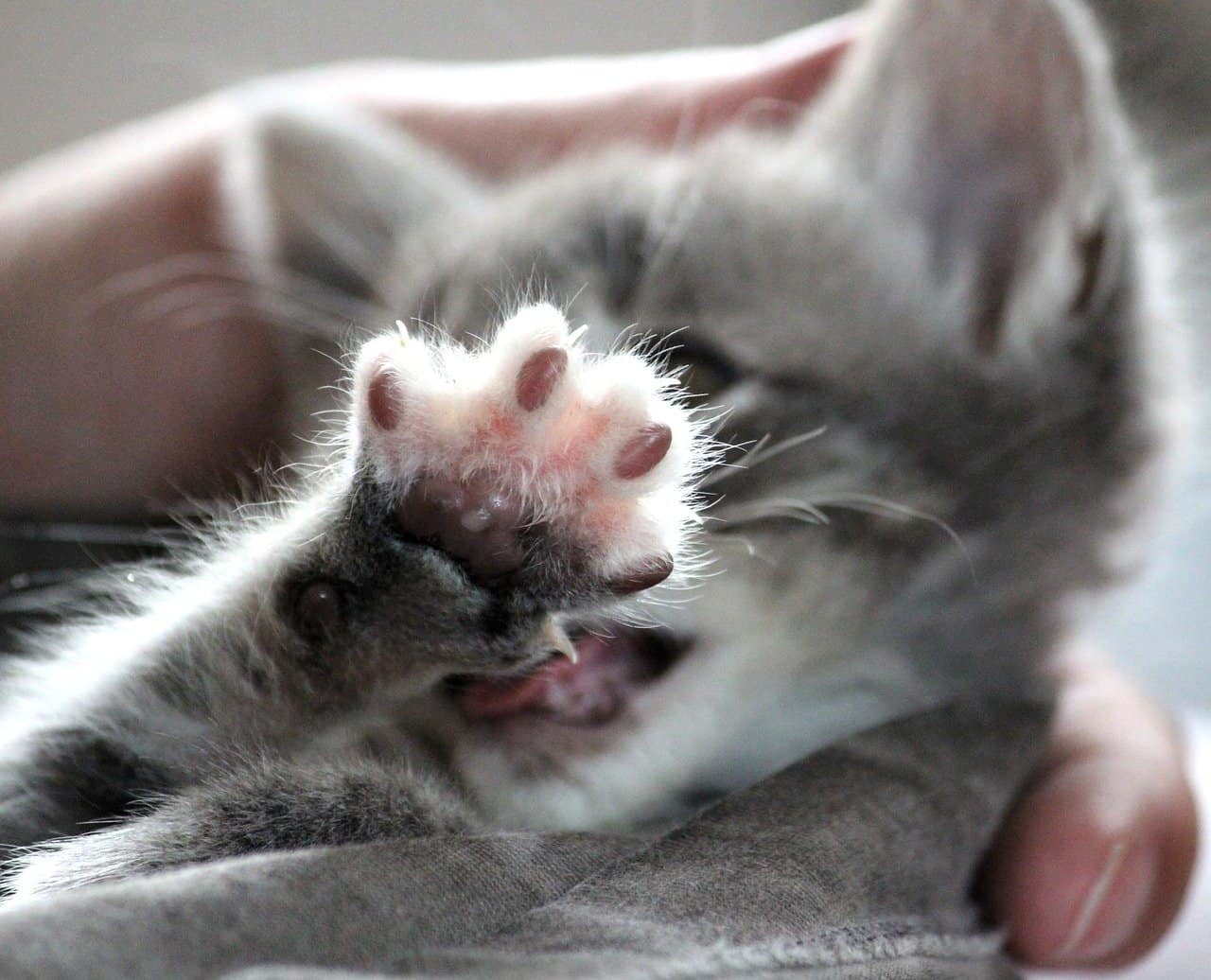Look between your cat’s adorable little toe beans, and you might see something surprising. Instead of four clearly defined toes, you’ll see that each of your cat’s digits is at least partly connected to the toes on either side. In other words, they have webbed feet. While not quite as obvious as the webbed feet of a duck or frog, the webbing between your cat’s toes serves an important purpose. Keep reading to learn more.
Did You Know Your Cat Has Webbed Feet?
The fact that cats have webbed feet isn’t exactly common knowledge. Thanks to their fur and their general sensitivity when it comes to their paws, it’s completely possible to live with a cat for years and not realize they have this interesting anatomical feature.
The webbing between feline toes is most noticeable on hairless breeds, like the Sphynx, Bambino, or Ukranian Levkoy. Sphynx cats also have especially long toes, which makes their webbing stand out even more. They’re not much different than the paws of your fluffy tabby, but the tabby’s hair can hide more than you think.
All domestic cats are classified as having “partially webbed” feet. Which means their toes aren’t as fully connected as that of a duck, but they still have thin stretches of skin between each toe. Some domestic cats have more webbing than others, and that same variation is found with the big cats of the jungle, forest, and Savannah.
The Reason for the Webbing
The reason why cats have webbed feet relates to their distant big cat cousins.
The Sumatran tiger, for example, has almost fully webbed feet. Their paws are specifically designed to help the big cats swim and traverse muddy land. Other species of big cats also have large, powerful, and partially webbed paws. And because your pampered house cat shares 95% of their DNA with a 1,000-pound tiger, it’s no wonder they have their webbed feet in common.
The reason behind those webbed feet has to do with survival. As predators, cats have to hunt for their food. If their hunts aren’t successful, they starve. The webbing between a big cat’s toes allows them to target their prey around, and sometimes even in, the water. This ability greatly expands their options when it comes to hunting.
The extra surface area created by a big cat’s webbed feet is used to push against water. It allows the cat to propel themselves through the water without exerting as much effort, and they swim farther with each stroke. Even when they’re not swimming, the webbing helps them walk, run, and pounce on wet or muddy ground without their paws sinking into the earth. Without these abilities, finding a meal would be even harder than it already is. Big cats rely on these physical features to keep them alive.
The Predator in Your Living Room
Your living room panther doesn’t have to hunt to survive like the big cats. But in the millions of years since domestic cats diverged from wild cats, the structure of their paws remains the same. Our house cats inherited their webbed feet, and even though most choose to avoid water, they still serve a purpose.
Most cats hate water because they despise the feeling of wet fur. But in a life or death scenario, their webbed paws have the power to save them. Cats are inherently good swimmers whether they like the water or not. They have strong limbs that propel them forward, and their webbed toes add to their power.
Hopefully, your pampered pet never has to put their webbed toes to the test. There are some domestic cats, however, that enjoy a good swim. And whether they use their webbed feet for practical purposes or not, they’re another feature that makes the feline anatomy so impressive.
If you don’t believe that cats have webbed feet, gently inspect your cat’s toes. If you’re careful, you can spread your cat’s toes apart to reveal the thin webbing. You might also be able to see it when your cat goes for a nice big foot stretch.






